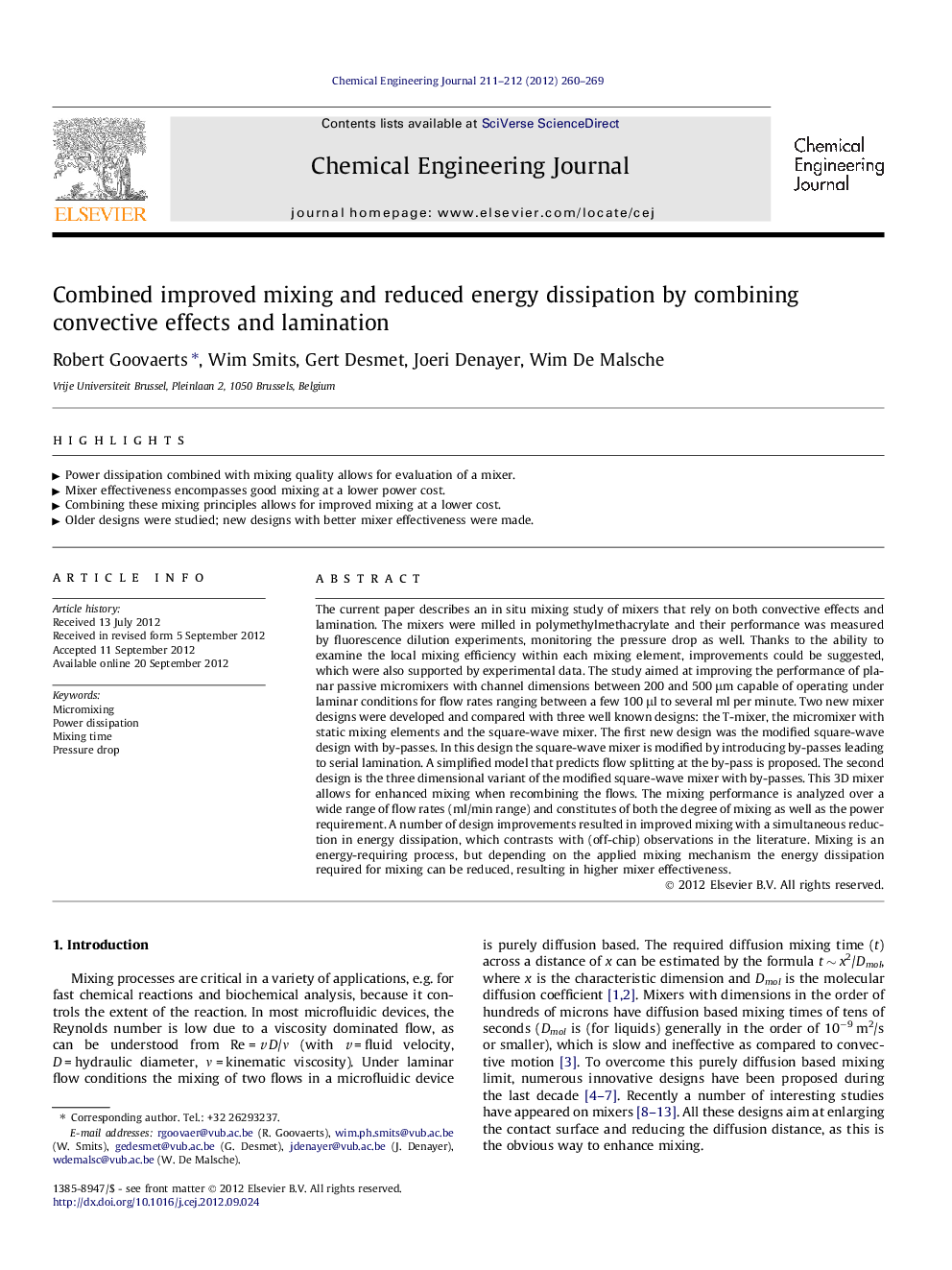| کد مقاله | کد نشریه | سال انتشار | مقاله انگلیسی | نسخه تمام متن |
|---|---|---|---|---|
| 149163 | 456428 | 2012 | 10 صفحه PDF | دانلود رایگان |

The current paper describes an in situ mixing study of mixers that rely on both convective effects and lamination. The mixers were milled in polymethylmethacrylate and their performance was measured by fluorescence dilution experiments, monitoring the pressure drop as well. Thanks to the ability to examine the local mixing efficiency within each mixing element, improvements could be suggested, which were also supported by experimental data. The study aimed at improving the performance of planar passive micromixers with channel dimensions between 200 and 500 μm capable of operating under laminar conditions for flow rates ranging between a few 100 μl to several ml per minute. Two new mixer designs were developed and compared with three well known designs: the T-mixer, the micromixer with static mixing elements and the square-wave mixer. The first new design was the modified square-wave design with by-passes. In this design the square-wave mixer is modified by introducing by-passes leading to serial lamination. A simplified model that predicts flow splitting at the by-pass is proposed. The second design is the three dimensional variant of the modified square-wave mixer with by-passes. This 3D mixer allows for enhanced mixing when recombining the flows. The mixing performance is analyzed over a wide range of flow rates (ml/min range) and constitutes of both the degree of mixing as well as the power requirement. A number of design improvements resulted in improved mixing with a simultaneous reduction in energy dissipation, which contrasts with (off-chip) observations in the literature. Mixing is an energy-requiring process, but depending on the applied mixing mechanism the energy dissipation required for mixing can be reduced, resulting in higher mixer effectiveness.
► Power dissipation combined with mixing quality allows for evaluation of a mixer.
► Mixer effectiveness encompasses good mixing at a lower power cost.
► Combining these mixing principles allows for improved mixing at a lower cost.
► Older designs were studied; new designs with better mixer effectiveness were made.
Journal: Chemical Engineering Journal - Volumes 211–212, 15 November 2012, Pages 260–269